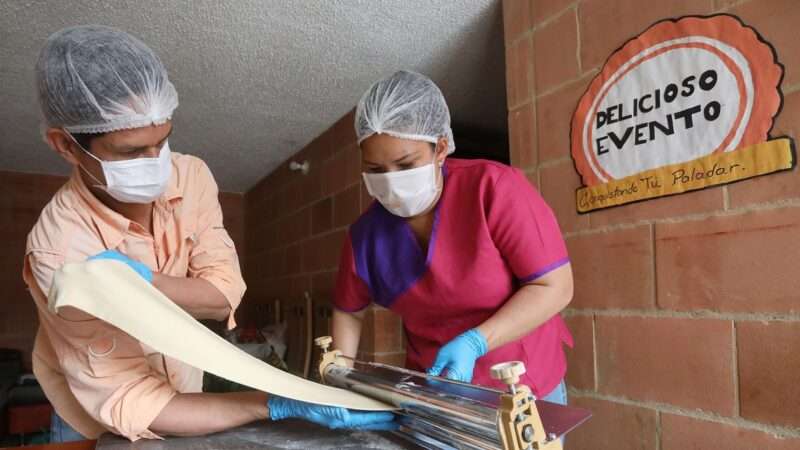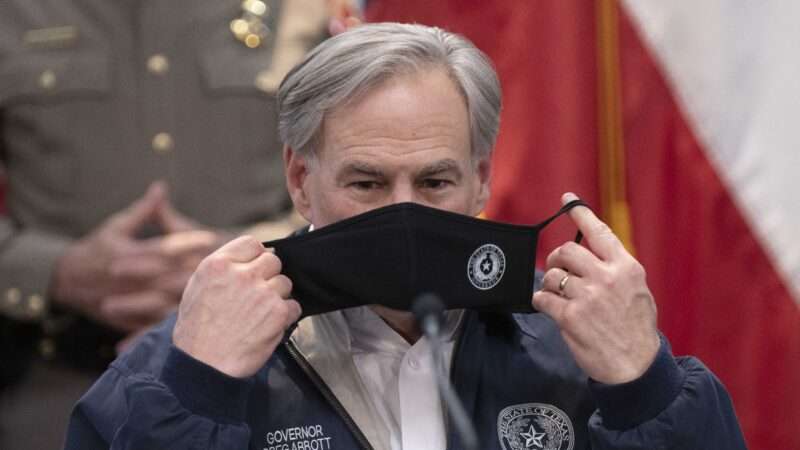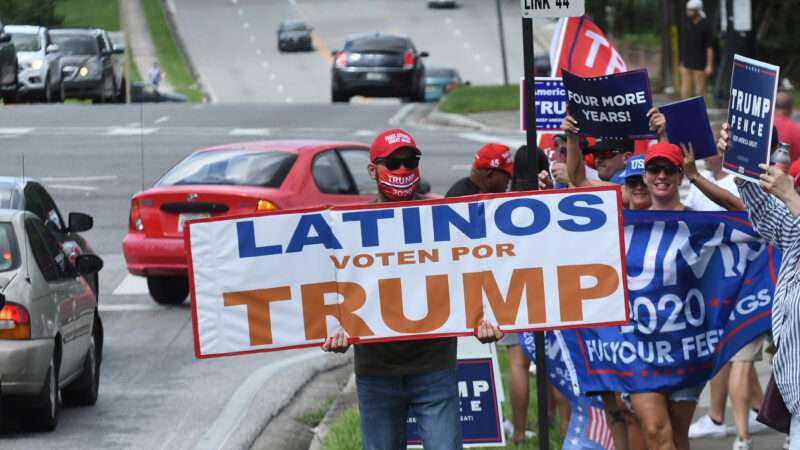Ordinarily, pharmaceutical companies are motivated by the prospect of profits from legally guaranteed exclusivity, provided either by the patent system or the FDA. Life-savings drugs are priced aggressively, leading to familiar debates about whether the costs are worth the benefits in promoting innovation. Covid-19 vaccines enjoy at least the possibility of patent protection, but companies like Moderna have pledged not to enforce their patent rights during the pandemic. Meanwhile, the companies are charging governments bargain basement prices for the vaccines they produce. Researchers have estimated the value of a vaccine at between 5% and 15% of global wealth, but pharmaceutical companies will receive nowhere near that much. Moderna’s market capitalization, for example, is only around $54 billion, while global wealth is around $360 trillion.
While the vaccine companies deserve kudos, self-interest is presumably playing a significant role. Moderna will surely make money on its vaccines, but much of the company’s value is likely attributable to the possibility that its mRNA and other technology will be useful for diseases besides Covid-19. This may help explain why the vaccine companies were willing to part with vaccine so cheaply. The demonstration that their vaccine platform can be safe is valuable. The goodwill that the vaccine companies earn with the public, and at least as importantly with drug regulators around the world, may be worth a lot too. The vaccine companies may also have suspected that they would not be granted Emergency Use Authorization if they did not promise to distribute their vaccines relatively cheaply. There is little sense in developing a vaccine for a pandemic if the government will slow-walk approval.
The result is that the incentives for vaccine development more closely resemble those of grants and rewards rather than those typically afforded by the patent system. The grants were the ex ante funding, from sources like Operation Warp Speed, and the rewards came in the form of government contracts, plus earned goodwill, after vaccines proved successful. Of course, it’s nothing new for governments to purchase drugs. Benjamin Roin has argued persuasively that even though prizes and reward systems of intellectual property are often seen as alternatives to the patent system, in fact various government purchasing and subsidy arrangements amount to de facto prize and reward systems that act as complements to our patent and regulatory exclusivities. Can we then draw any conclusions about prize or reward systems from the Covid-19 experience?
One tempting conclusion might be that intellectual property is unnecessary or that government should take patents, paying considerably less than what the patentees could earn on the market. For example, Hannah Brennan, Amy Kapczynski, Christine Monahan, and Zain Rizvi have urged the government to use 28 U.S.C. § 1498 to involuntarily license various pharmaceuticals. The government would be required to reimburse the pharmaceutical companies, but Brennan et al. urge a payment formula based on risk-adjusted research and development costs that, they say, would result in much lower revenue for the pharmaceutical companies. More radically still, one might imagine abolishing the patent size and creating a reward system in its place. Jamie Love, for example, has argued for a system in which a fixed amount of money is devoted annually to pharmaceutical innovation. Supporters of such systems might point out that the non-patent rewards during the Covid-19 pandemic were sufficient to lead to the development of vaccines and that if the pharmaceutical companies instead had set prices at their profit-maximizing value, the vaccines would have been much more expensive.
In my view, Covid-19 cuts in the opposite direction, for three reasons. First, governmental funding of COVID-19 was way too low, as Alex Tabarrok has repeatedly pointed out. If profits, from whatever source, had been at all proportional to the benefits provided, the population would likely have been vaccinated by now. The elasticity of supply of vaccines is not zero. Sure, the vaccine companies have worked very hard at producing vaccines, starting their supply chains much earlier than would have been the case with a typical vaccine. But if they had invested ten or a hundred times more money, writing incentive-laden contracts with their own suppliers, the supply chain would have responded. The U.S. government has just now brokered a deal between Merck and Johnson & Johnson for the former to produce the latter’s vaccine. With enough incentives, the market could have produced such a deal without any government interference. More importantly, it could have done so long ago, so that the new capacity would already be available, instead of anticipated in several months, after there will already be enough vaccine capacity for the United States. Meanwhile, vaccine manufacturers have built new factories. With enough incentives, they could have built more such factories. Those factories may be competing for other supply chain inputs, but government spending commensurate with the challenge could have generated much more supply. If a patent prize or reward system requires the government to be sensible in allocating an appropriate amount of money ex ante, the fact that the United States invested too little money does not inspire great confidence. And the rest of the world, other than Israel, was even more short-sighted.
Second, Covid reinforces what has long been apparent, that pharmaceutical research is highly risky, with the vast majority of research efforts ultimately failing. Covid-19 vaccines have been quite successful, but there have still been many failures, such as that of Sanofi and GlaxoSmithKline. Brennan et al. are not oblivious to considerations of risk and would insist that the government should reimburse pharmaceutical companies for their risk-adjusted R&D. But there is a danger that the government will underestimate risk. Hindsight bias may make it seem that a successful drug was destined for success from the beginning. Moreover, the government may focus more on spending narrowly targeted toward the particular problem, rather than spending to create the company and infrastructure that then were able to address the problem. Most of the value provided by the pharmaceutical companies was provided before the pandemic, and absent the pandemic, investors in companies like Novavax would have been empty-handed. A risk-adjustment allocation may place too little emphasis on dangers of wasted investment long in the past, when companies and facilities were created. Completely ex post rewards set by the government also might be set too low.
Third, when the government decides how much a pharmaceutical company should be reimbursed for its efforts, it may tend to place too little emphasis on non-R&D investments. Love, for example, has criticized pharmaceutical companies for “wasteful spending on marketing.” That may often be the case, but Covid-19 at least has helped illustrate the importance of pharmaceutical competencies in clinical trials, in production, and in scaling up inventions. As has been pointed out before, Moderna’s vaccine was invented by January 13, 2020. The challenge was not invention but all of the subsequent steps. And one might wonder whether some of the logistics of rolling out the vaccine would have been smoother if the pharmaceutical companies were charged with distribution and paid based on a reasonable measure of lives saved. If the patent system were replaced with a reward system, the government would likely shortchange non-R&D contributions, just as it has not relied on pharmaceutical companies or big businesses to get the produced vaccines into arms.
The knock on governmental reward systems has always been that the government might shortchange inventors, once their inventions are complete. The famous story used to illustrate this tendency is that of John Harrison, who invented a timepiece that could be used by navigators to determine longitude but was not awarded all of a promised prize. My colleague Jonathan Siegel argues that in fact Harrison was fairly treated, as the Board of Longitude reasonably interpreted the statute creating the prize. After all, Harrison invented a single timepiece, not a production line that could churn out timepieces that could be used to solve the longitude problem. Ultimately, the episode may show both that government rewards will be too low relative to their social value and that a benefit of reward systems is that they can take into account a range of considerations, not only the occurrence of an invention but also efforts by the inventor and others that contribute to effective commercialization and distribution.
It is possible to imagine a reward system that could only increase innovation and that could provide incentives for the diverse contributions needed to bring successful drugs and other inventions to market. In my own writing on patent rewards, I have argued for an optional system. The government would create a fund, committing some amount of money ex ante, but inventors would be able to choose between exploiting patents and seeking money from the fund. If the government puts too little money in the fund, we’d be no worse off than in the absence of the fund, and probably a little bit better off, because those most likely to take advantage of it would be those who have contributions that are hard to monetize through patents. The experience with Covid-19 suggests to me that the government probably would put too little money in such a fund. That’s not a reason to give up on prize and reward alternatives to patents (for my review of the literature on this topic, see here), but it highlights that any design for a reward system cannot rely entirely on governmental grace to set an appropriate compensation level.
from Latest – Reason.com https://ift.tt/2O2pnEi
via IFTTT


